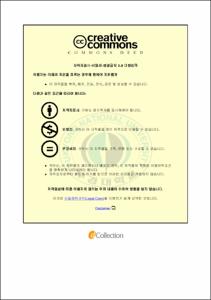배기후처리장치를 이용한 오염물질 저감에 관한 연구
- Alternative Title
- A study on the emission reduction using after-treatment system
- Abstract
- As industry grows, atmospheric pollution becomes serious by emission from combustion facilities such as generating plants and various industrial furnaces. In order to solve these problems, many researchers have made efforts to reduce the pollution with new technologies and various methods such as reburning, oxygen enrichment, pulsating combustion and after-burning technology at industrial field.
For these reasons, we have studied and developed a venturi type after-treatment system to reduce the emission more efficiently by minimizing combustion area. We have also studied emission reduction characteristic of model gas turbine and furnace using catalyst as a after-treatment system It is main objective to reduce the emission with the addition of venturi type after-treatment system. Although emissions decreases for most experimental conditions, emissions increases for some experimental conditions. In this experiment, it is found that oxygen flow rate of 8l/min for area ratio of 0.27 and 0.55 is adequate considering pollutants reduction with oxygen consumption and flame stability.
In the case of model gas turbine, the excess air ratio has large influence on the reduction of HC and CO, at the range of air ratio α=0.93~1.14. The reduction effects of Pt/Rh catalyst for NOX are more notable without regard to the excess air ratio. In the case of Pt and Pd catalyst, excess air ratio has an influence on the reduction of NOX and the reduction effect is more notable at α=1.26.
In the case of model furnace, NOx conversion increases as cell number increases for Pd catalyst. It shows 100% conversion ratio at cell number of 200 and 300 for pt catalyst. Also, Pt catalyst are better than Pd catalyst at α=1.5 on these conditions. In addition, CO and HC concentrations decreases at α=1.5 with Pd catalyst.
- Issued Date
- 2010
- Awarded Date
- 2010. 2
- Type
- Dissertation
- Publisher
- 부경대학교
- Alternative Author(s)
- Lee, Yong Hoo
- Affiliation
- 부경대학교 대학원
- Department
- 대학원 기계공학부에너지시스템공학전공
- Advisor
- 이도형
- Table Of Contents
- 목 차 I
List of figures and tables IV
Nomenclature X
Abstract XIII
제 1 장 서 론 1
1.1 연구 배경 1
1.2 연구 목적 4
제 2 장 이 론 6
2.1 불균일 촉매의 화학반응과 특성 6
2.1.1 촉매연소의 개념과 화학반응 6
2.1.2 공간속도 및 성능 8
2.2 연소 수치해석 13
2.2.1 지배방정식 13
2.2.2 난류 모델 17
2.2.3 난류 연소 모델 19
2.2.4 격자생성과 계산방법 26
제 3 장 벤츄리형 후연소기를 이용한 오염물질 저감기술 28
3.1 실험장치 및 방법 28
3.1.1 실험 장치 28
3.1.2 실험 방법 34
3.1.3 실험 조건 39
3.2 후연소기 설계 41
3.2.1 벤츄리 형상 결정 41
3.2.2 보염기 위치 결정 41
3.3 산소부하에 따른 영향 45
3.4 유인공기에 따른 특성 54
3.4.1 유인공기에 따른 특성 54
3.4.2 유인공기 및 산소부화에 따른 특성 63
3.5 보염기 위치변화에 따른 특성 72
3.5.1 온도분포 특성 72
3.5.2 각종 화학종 농도 특성 74
3.5.3 Soot 발생 특성 79
3.6 수치해석 81
3.6.1 계산방법 및 조건 81
3.6.2 해석 결과 88
3.7 결론 95
제 4 장 소각로에서 촉매에 의한 오염물질 정화 특성 97
4.1 실험장치 및 방법 97
4.1.1 실험 장치 97
4.1.2 실험 조건 101
4.2 실험결과 및 고찰 103
4.2.1 온도분포 특성 103
4.2.2 NOx 정화 특성 106
4.2.3 화학종 농도 특성 110
4.3 결론 114
제 5 장 모형가스터빈 연소기에서의 귀금속 촉매에 의한 오염물질
정화 특성 115
5.1 실험장치 및 방법 115
5.1.1 실험 장치 115
5.1.2 실험 조건 116
5.2 실험결과 및 고찰 120
5.2.1 촉매층 입․출구에서의 온도 분포 120
5.2.2 오염물질 평균 농도 분포 124
5.2.3 오염물질 정화 특성 129
5.3 결론 133
제 6 장 결 론 134
참고문헌 138
- Degree
- Doctor
- Appears in Collections:
- 과학기술융합전문대학원 > 기타 학과
- Files in This Item:
-
-
Download
 배기후처리장치를 이용한 오염물질 저감에 관한 연구.pdf
기타 데이터 / 11.93 MB / Adobe PDF
배기후처리장치를 이용한 오염물질 저감에 관한 연구.pdf
기타 데이터 / 11.93 MB / Adobe PDF
-
Items in Repository are protected by copyright, with all rights reserved, unless otherwise indicated.